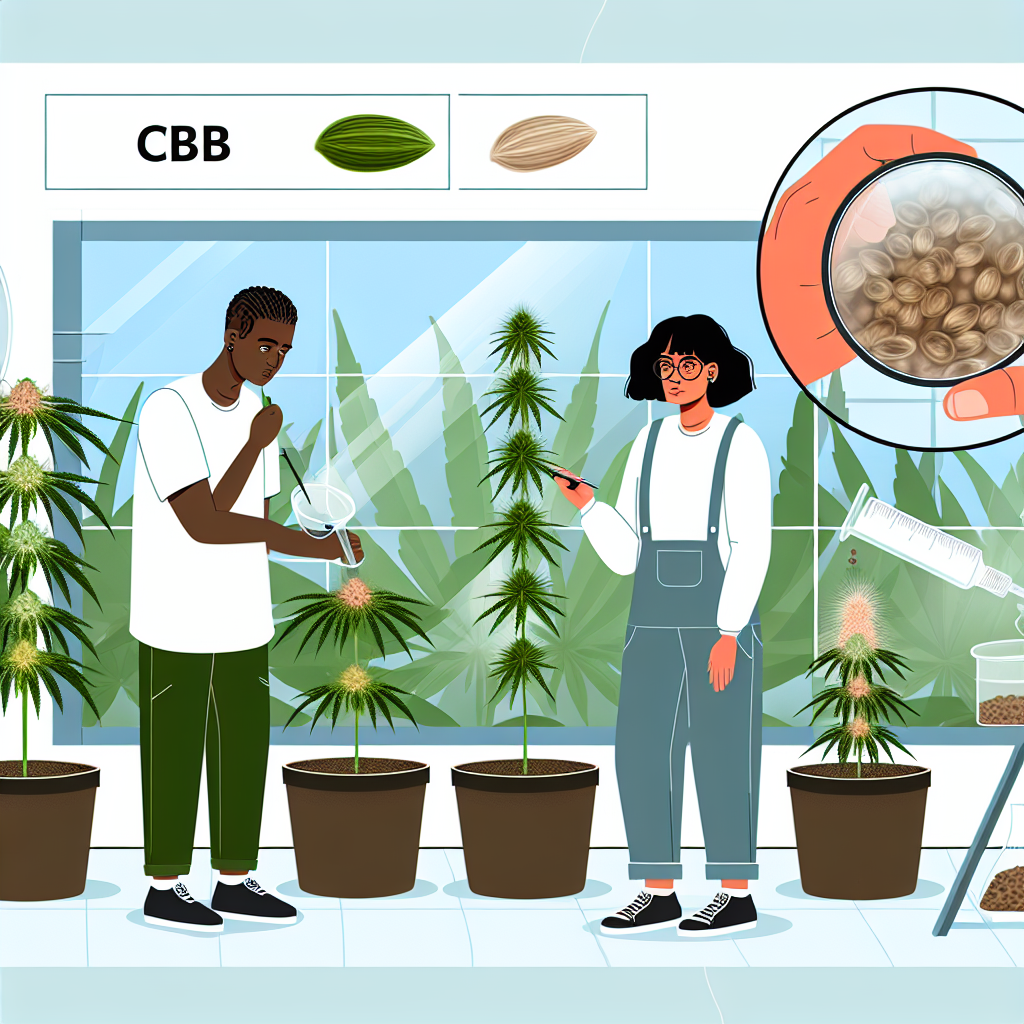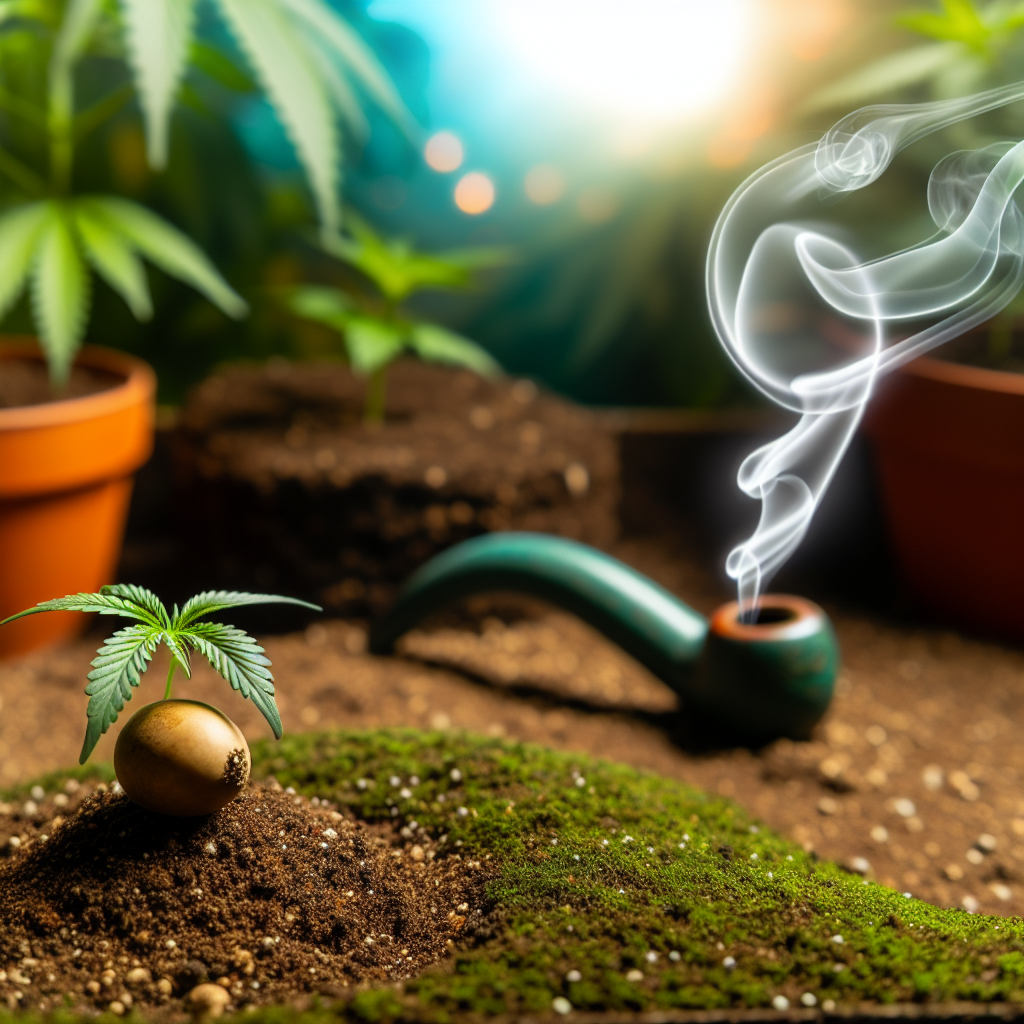CBG Flower Breeding: Creating High-CBG Strains from Regular Seeds
Introduction: The Rise of CBG in the Cannabis Industry
The cannabis industry is undergoing a massive transformation, driven by scientific innovation and consumer demand. Among the many compounds influencing breeding practices, cannabigerol (CBG) is gaining notable attention. Often referred to as the “mother cannabinoid,” CBG is a non-intoxicating compound from which other cannabinoids like THC and CBD derive during the plant’s biosynthetic process. As consumer awareness expands beyond THC and CBD, CBG has become increasingly popular due to its potential therapeutic benefits and lack of psychoactivity.
CBG exists in much smaller quantities in most cannabis strains, usually less than 1%, making it a rare and expensive cannabinoid to source. However, advances in plant genetics and breeding practices are allowing cannabis breeders to isolate and develop CBG-dominant strains—particularly through the manipulation of regular seeds. By cultivating strains that inhibit the enzymatic conversion of CBG into THC or CBD, breeders have begun to grow plants with high CBG content, sometimes exceeding 10%. This process not only increases cannabinoid extraction efficiency but also opens new avenues for medical research and consumer applications.
Breeding high-CBG flower from regular seeds is an intricate process requiring selective phenotyping, genetic stability, and cannabinoid testing. The goal is to create cultivars that maintain high CBG levels while displaying agronomic traits desirable for large-scale cultivation, including pest resistance, yield, and adaptability to environmental conditions.
For cannabis professionals, particularly those involved in cultivation and product development, understanding the genetic and biochemical pathways of CBG is essential. As a pioneering component in medical applications such as anti-inflammatory, neuroprotective, and antibacterial treatments, this minor cannabinoid is poised to become a major player in specific niches within the wellness and pharmaceutical sectors.
In this article, we delve into the science behind CBG flower breeding from regular seeds, including genetic considerations, breeding methodologies, and insights from recent studies. Whether you’re a cannabis cultivator, product developer, or enthusiast, mastering CBG strain development offers high potential and growing opportunity in a maturing industry.
The Science Behind CBG: Genetics and Biosynthetic Pathways
Developing high-CBG cannabis strains from regular seeds involves an understanding of cannabinoid biosynthesis. The cannabis plant synthesizes cannabinoids from the precursor compound cannabigerolic acid (CBGA). Enzymes convert CBGA into tetrahydrocannabinolic acid (THCA), cannabidiolic acid (CBDA), or cannabichromenic acid (CBCA). In varieties where these converting enzymes are missing or minimally active due to genetic mutation, CBGA accumulates, ultimately resulting in high levels of CBG.
Key research has documented the genetic profiles necessary for high-CBG expression. A 2021 study published in *Frontiers in Plant Science* analyzed cannabis chemotypes and identified mutations in the THCAS and CBDAS gene families, which prevent the conversion of CBGA into other compounds, allowing CBG to remain the dominant cannabinoid ([source](https://www.frontiersin.org/articles/10.3389/fpls.2021.707159/full)). This genetic composition is paramount in identifying and breeding CBG-rich plants.
From Seed to Success: Breeding High-CBG Strains from Regular Genetics
The breeding process usually begins with regular (non-feminized) seeds, which contain both male and female plants. Breeders select phenotypes displaying the desired chemical composition—verified through High-Performance Liquid Chromatography (HPLC)—and strong agronomic traits. Once high-CBG plants are identified, breeders backcross them over several generations while maintaining cannabinoid expression and improving yield and stability.
Recent tools are accelerating this process. Marker-assisted selection (MAS) allows breeders to screen seedlings for desired genetic traits, saving months of growth and testing. Companies like Medicinal Genomics and Phylos provide genomic sequencing services tailored to cannabis, enabling breeders to pinpoint CBG-rich genotypes with precision.
The Therapeutic Advantage: Why CBG Strains Matter
Another compelling feature of high-CBG strains is their potential therapeutic value. A 2013 study published in *Biochemical Pharmacology* found that CBG has significant anti-inflammatory effects in treating inflammatory bowel disease ([source](https://www.sciencedirect.com/science/article/abs/pii/S0006295213002043)). CBG has also demonstrated neuroprotective properties. A 2015 study conducted on mice models showed that CBG helps protect neurons in Huntington’s disease, a severe neurodegenerative disorder ([source](https://www.ncbi.nlm.nih.gov/pmc/articles/PMC4311234/)).
Additionally, CBG has been shown to possess antibacterial properties even against drug-resistant strains like MRSA (Methicillin-resistant *Staphylococcus aureus*), as seen in a 2020 study in the journal *ACS Infectious Diseases* ([source](https://pubs.acs.org/doi/10.1021/acsinfecdis.9b00346)). These findings make high-CBG cultivars attractive not only from a cultivation standpoint but also offer promising ingredients for medical formulations.
Timing is Everything: Optimal Harvest and Post-Harvest Practices
The cultivation of CBG flower also necessitates careful harvesting techniques. Because CBG is a precursor to other cannabinoids, timing is critical. If harvested too late, CBGA may convert into THCA or CBDA, significantly lowering the final CBG content. Typically, CBG-rich plants are harvested slightly earlier in the flowering cycle, often around the sixth week, as compared to the standard eight-to-nine-week flowering period.
Post-harvest processing must also preserve cannabinoid integrity. Temperatures during drying and curing must be controlled to prevent degradation or chemical transformation of CBG. Extractors and product manufacturers must tailor their extraction techniques—such as supercritical CO2 or ethanol extraction—to isolate CBG effectively without unwanted breakdown.
Conclusion: Pioneering the Future of Cannabinoid Breeding
As the cannabis industry matures, CBG presents a rare yet valuable opportunity for specialization. Innovative breeding from regular seeds offers a robust path toward creating high-CBG strains, leveraging both genetic science and agronomic skill. Breeders and cultivators who master these techniques can establish themselves at the forefront of a cannabinoid frontier with vast medical and commercial potential.
Concise Summary (100 words):
The rise of cannabigerol (CBG) in the cannabis industry has led to the development of high-CBG strains from regular seeds. By understanding the genetic and biosynthetic pathways of CBG, breeders can identify and cultivate plants with elevated CBG levels, sometimes exceeding 10%. This process involves selective phenotyping, genetic stability, and cannabinoid testing. High-CBG strains offer potential therapeutic benefits, including anti-inflammatory, neuroprotective, and antibacterial properties. Mastering CBG strain development presents a valuable opportunity for cannabis professionals, as this minor cannabinoid emerges as a major player in the wellness and pharmaceutical sectors.




